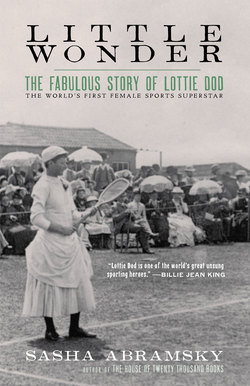Little Wonder

Реклама. ООО «ЛитРес», ИНН: 7719571260.
Оглавление
Sasha Abramsky. Little Wonder
Отрывок из книги
This book is dedicated to my grandmother Mim, our Tiny Dancer, who traveled the world in her eighties and never grew bored of life’s adventures. And to my children, Sofia and Leo, who hiked up mountains and climbed on glaciers with me, while I was reporting this book, with (almost) nary a complaint.
Charlotte Dod, aged eighty-eight, was lying in her bed, in the Birchy Hill Nursing Home[1] in the sleepy southern English village of Sway. It was a peaceful place, quiet, as good as any other spot to spend one’s final years. The village had a cluster of houses ranged along a few main streets, a handful of pubs, one church—St. Luke’s—tennis and archery clubs, and a community choir, all surrounded by the oaks and other trees of the New Forest, England’s last major acreage of densely wooded land. Carved out of the forest in places was pastureland, on which grazed herds of cattle, horses, and ponies. A few miles to the south were the genteel beach towns, retirement communities and tourist resorts dotting the windswept coast of the English Channel. Towns with names such as Lymington and Milford-on-Sea, Barton-on-Sea and Bournemouth. Their streets were lined with elegant mock-Tudor homes, the fronts cordoned off from prying eyes by tall hedgerows, as well as a fair number of thatched-roof cottages. There were, as well, many guesthouses in these parts, the front porches of which were decorated with hanging baskets of colorful flowers.
.....
Around the grass courts at Worple Road, noted A. Wallis Myers, the first great chronicler of the game, at times the spectators were jammed in so tightly that “not even a ferret could squeeze through the centre court crowd.” In the early days of the tournament, before the large stadiums were constructed, before women had been admitted to play, people would pay two shillings and sixpence simply to sit or stand wherever they could around the roped-off courts, some perched on chairs they had brought with them, others on piles of heated bricks they rented from hawkers on the grounds.[25] During the rains, they would unfurl huge umbrellas, under which they would shiver while the male players gamely continued. More recently, some semblance of order had been created by the building of the tiered seating, the boxes, the standing areas rising up around the courts. By the thousands, ticket holders, many of them dropped off by London and South Western Railway trains originating from Waterloo, which stopped at the Wimbledon station by the grounds, came to watch the games during the championship week.[26] Each year, it seemed, the sport grew more popular.
In 1922, after years of discussions, the championships finally moved to larger grounds on Church Road, a few miles from the original location, where the All England Lawn Tennis and Croquet Club and its famous tournament have remained ever since.
.....